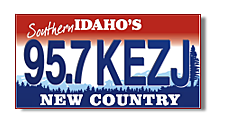
Yellowstone North Entrance Is Open For The First Time Since Destructive Flooding
In June of this year, days of rain caused massive flooding in Yellowstone National Park. The entire park was closed for a couple of days and the north entrance of the park was shut down, until recently. The north entrance of the park is officially open.
Yellowstone National Park Flooding
The floods in June really messed up a lot of the roadways at Yellowstone National Park. There were videos circulating of rushing water through roads, homes being washed away by the river, and overall, massive destruction. Yellowstone had to shut down until the rains stopped and they could assess the damages. Lots of people lost their homes and their belongings. Lots of people had to be evacuated and had planned their trip for years, just to have it crushed by the water flowing through the park.
The Good News
The good news is that the north part of the park is officially back open. It was completed sooner than expected and that means the park will start to allow more people in at the beginning of next season. There were rules in place to only allow so many people in the park each day to prevent overcrowding and accidents. You have to admit, it was a pretty heft job that got done super fast. So no need to worry about next season, everyone should be able to get in.
All entrances to Yellowstone are officially back open and the park is ready for all the visitors it can get.
LOOK: The most expensive weather and climate disasters in recent decades
See the Must-Drive Roads in Every State
More From 95.7 KEZJ









